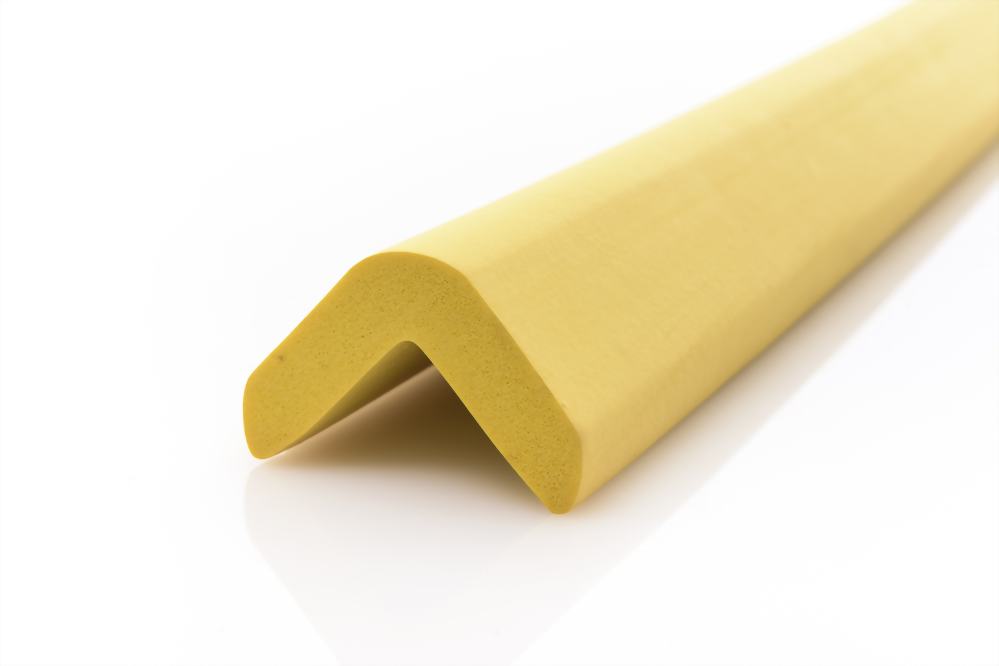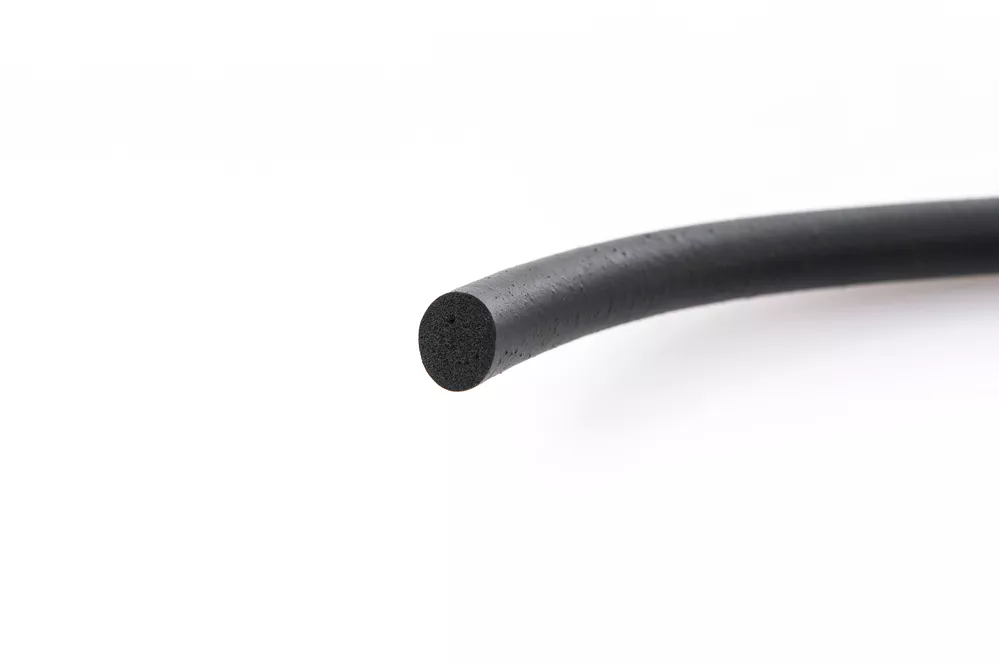13
2023
-
12
Specification for sponge rubber and foamed rubber
□Standard Specification For Flexible Cellular Materials – Sponge or Expanded Rubber
□Sponges (Open Cell) and Expanded (Closed Cell) Foams
□ASTM D 1056-68 – The last two digits refer to the year of the test method issued (1968)
□If there is no year mentioned that means the most recent version of ASTM D 1056 is being referred to.
□Sponge products are identified by a three-character Grade Number (example: 2A2).
□The three characters represent
1.Type,
2.Class ,
3.Grade.

一.Type, Classes and Grades
〖Types〗
Types – These specifications cover two types of cellular rubber designated by the prefix numbers 1 and 2
Type 1 = Open Cell Rubber
Type 2 = Closed Cell Rubber
〖Classes〗
Classes – Both types are divided into four classes designated by the letters A, B, C, and D added to the number
prefix
Class A = Cellular rubber made from synthetic rubber, natural rubber, reclaimed rubber, or rubber-like materials, alone or
in combination, where specific resistance to the action of petroleum base oils is not required.
Class B = Cellular rubber made from synthetic rubber or rubber-like materials alone or in combination, having specific
requirements for oil resistance with low mass change.
Class C = Cellular rubber made from synthetic rubber or rubber-like materials alone or in combination, having specific
requirements for oil resistance with medium mass change.
Class D = Cellular rubber made from synthetic rubber or rubber-like materials alone or in combination having specific
requirements for extreme temperature resistance -103 to 347°F (-75 to 175°C): but specific resistance to the action of petroleum-base oils is not required.

〖Grades〗
Each type and class has been divided into a number of different grades.
Each grade is based on specific range of firmness as expressed by compression-deflection. Grades are designated by
digit, the softer grades being identified with lower numbers and the higher grades being idenitified with the higher
numbers.
Grade 0 – For Types 1 and 2 cellular rubber, a compression deflection range from 0 to 2 psi (0 to 13.8 kPa)
Grade 1 = For Types 1 and 2 cellular rubber, a compression deflection range from 2 to 5 psi (13.8 to 34.5 kPa)
Grade 2 = For Types 1 and 2 cellular rubber, a compression deflection range from 5 to 9 psi (34.5 to 62.1 kPa)
Grade 3 = For Types 1 and 2 cellular rubber, a compression deflection range from 9 to 13 psi (62.1 to 89.6 kPa)
Grade 4 = For Types 1 and 2 cellular rubber, a compression deflection range from 13 to 17 psi (89.6 to 117.2 kPa)
Grade 5 = For Types 1 and 2 cellular rubber, a compression deflection range from 17 to 25 psi (117.2 to 172.4 kPa)

二.Suffix Letter Test Required
Suffix Letter Test Required
A, Heat resistance
B, Compression set (B1 for 1A, 1B, and 1C only) (B2 & B3 for 2A, 2B, 2C, 2D only)
C, Ozone or weather resistanceB
D, Load deflectionC
E, Fluid resistanceC
F, Low-temperature resistance
G, Tear resistanceB
J, Abrasion resistanceC
K, Adhesion capabilityC
L, Water absorptionC
M, Combustion characteristicsD
N, Impact resistanceC
P, Staining resistanceC
R, ResilienceB
T, Tensile/ElongationB
W, DensityB
Z, Special requirements
Suffix numbers that follow the suffix letter denote different testing parameters or conditions for that suffix.
For e.g. B1 stands for C. Set at 70oC (158oF) and B2 stands for C. Set at 23oC (74.3oF) or Room Temp.
B Ratings to be arranged between the purchaser and the supplier
C Test method and values to be arranged between the purchaser and the supplier
Caution:
Test Temperatures for Open Cell are higher than for Closed Cell and should NOT be used for Closed Cell.
Example Line Call Out for Sponge ASTM D-1056 2C2 A1 B2 E1 Z (Z = material passes FMVSS 302)
2 – Closed Cell,
C – Medium Oil Swell or Medium Oil Resistance
2 – Compression Deflection (25% Compression) 5 to 9psi,
A1 – Change in Compression Deflection after aging for 22h at 100°C to be +/-30% from Original C.D.,
B2 – Compression Set at 23°C for 22h (50% compression) and after 24h recovery to be max. of 25%,
E1 – Test method and values to be arranged by the Purchaser and the Supplier
Z = States special requirement as detailed.
Caution:
Test Temperatures for Open Cell are higher than for Closed Cell and should NOT be used for Closed Cell.

叁.ASTM D 1056 CHART
|
ASTM D1056 -68 |
ASTM D1056 -73 |
ASTM D1056 -77 |
ASTM D1056 -85 |
ASTM D1056 -14 |
|
RE41 BF1 |
RE 41 BF1 |
RE 41 B2F1 |
2A1 B2F1 |
2A1 B2F1 |
|
SBE 43 BCF2 |
RE 43 BCE2F2 |
RE 43 B2C1E2F2 |
2B3 B2C1F2 |
2B3 B2C1F2 |
|
SCE 42 |
RE 42 E1 |
RE 42 E1 |
2C2 |
2C2 |
|
Types: R (No Oil Resistance) and S(Medium to Low Oil Resistance) |
No SBE and |
No SBE or SCE. |
A-No Oil |
A-No Oil |
|
|
|
Suffix B1 – C. Set |
|
B1 – Only for |
|
Type S Class SB - |
Suffix E1 – |
|
|
Suffix E1 – Oil |
|
No allowance for |
Density Less |
|
|
Allowances for |
|
Grades: 40, |
Grades: 40, 41, |
Grades: 40, 41, |
Grades: 0, 1, 2, |
Grades: 0, 1, 2, |
四. ASTM D 1056 MISCELLANEOUS…
MIL-C -3133;
→ The same as D 1056 and was discontinued in 1986.SAE J18;
→ The same as D 1056, discontinued.ASTM D1667;
→ Very similar to 1056. Specifically for PVC containing closed cell foams.ASTM D3575;
→ Similar to 1056 for polyolefin foams. Plastics like polyethylene and ethylene vinyl acetate.
To learn more about the size, material, product catalog and price of Sponge foam rubber seals, please contact us as follows
Contact: Emily Ke
Email: Emilyke@lanhechina.com
Tel: (86)769-85637586
Phone: (86) 138 2927 2978
More News


